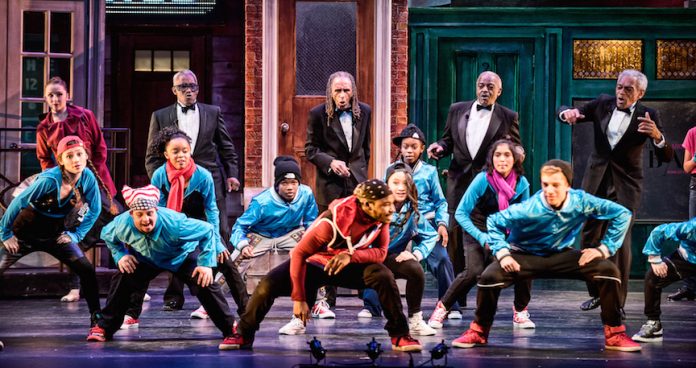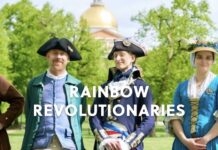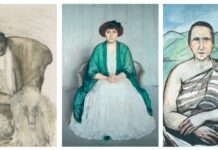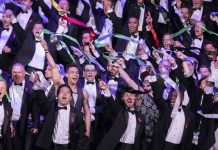
[This story appears in the November|December 2016 issue of Boston Spirit magazine:]
Making the Tchaikovsky’s The Nutcracker more contemporary and more inclusive—including performances specifically for LGBT audiences—while still holding to its classical tradition is what makes “Urban Nutcracker” as much of a local holiday tradition as its Boston Ballet counterpart.
For creator Tony Williams, “Urban Nutcracker” was born of community need. “I was steeped in the traditional ‘Nutcracker’ as a kid with Boston Ballet,” says Williams, a Jamaica Plain native who in the early 1960s became the first African-American principle dancer in the Boston Ballet.
In 2000, Williams started a dance school—now the Tony Williams Dance Center—in Jamaica Plain. He learned that “a lot of boys were attracted to hip hop and tap, not ballet,” he says. “I was thinking of doing a ‘Nutcracker’ with the school because it’s a great way to get everyone involved and because I like putting on shows. In Jamaica Plain there’s a very diverse community, many of my teachers are African-American, so I said ‘let’s do one with tap and hip hop and a classical base.’” Williams recalls that someone suggested he check out Duke Ellington’s jazz recording of “The Nutcracker Suite.” Williams immediately had the idea to combine the jazz and classical components into “a big stew of dance styles.”
The result was “Urban Nutcracker” which was set in the present and mixed Tchaikovsky’s score with Duke’s big band version. “I had no idea it would work,” says Williams. “I didn’t know what would happen but the first night at the Strand Theater [in 2001] was sold out. We opened on a downtown scene and the audience went wild.”
Fast forward 16 years and “Urban Nutcracker” returns to John Hancock Hall, its home for the past six years, for 13 shows, December 16-31. Drawing audiences from Boston and the suburbs, black and white, straight and LGBT, it’s one of the city’s most beloved and inclusive holiday events. “I’m all about trying to represent all community citizens,” says Williams. “That’s my goal.”
This year’s annual LGBT show takes place December 29 at 7:30 p.m.
“We love the LGBT show. It started in 2011 and was such a big hit; [LGBTs are] a huge part of our cast and our audience,” says Dustin Rennells, the company’s operations manager who guides all aspects of the shows. (“I’m the person you talk to if something’s wrong with your seat and I’m the person the cast talks to if there’s a sequin missing,” Rennells says.) He’s also the costume designer—updating, adjusting and modifying the show’s original designs by artist Rebecca Cross. Where he finds the time or energy to also work as an event planner for Fenway Community Health Center is anyone’s guess.
When “Urban Nutcracker” reached the 15th-year mark last season, Rennells and the design team recreated the sets and costumes based on the production’s original ideas. “It just about did us all in, but it was an amazing show, visually,” says Rennells, a Missouri native who studied at the Art Institute of Boston and who has been with “Urban Nutcracker” for 10 years.
Besides the LGBT show, Rennells says he’s most proud that “Urban Nutcracker” offers an Autism-friendly show (it takes place December 17 at 11 a.m.). “Three years ago, the of brother of one of our dancers asked would it be appropriate to bring his child who has Autism and we just felt, of course, that shouldn’t even be an issue! That allowed us to create an experience for everyone to enjoy without the fear of being too loud, or worrying if they have to get up and leave,” says Rennells. “We keep [the house] at half light, and the music is not as loud, and there are secluded spaces where people can go if they need a break.”
The LGBT show allows the company to have some fun, drawing inspiration from the Les Ballets Trockadero de Monte Carlo, the legendary, all-male comic ballet company Williams has worked with in the past and which combines classical ballet with camp. Last year, for instance, the intimate “Arabian Nights” segment of “Urban Nutcracker” was danced by two male dancers including Rick Vigo who, says, Rennells, “performed a stunning showcase. It was so beautiful; it was my favorite part of the show last year.”
In his 11 seasons with “Urban Nutcracker,” Vigo has danced the Snow King and the Nutcracker Prince among other roles. A native of Hawaii, Vigo learned to dance from his mother and by watching Madonna and Michael Jackson videos. “I wanted to perform for Madonna. That was my ambition; it kind of still is, secretly,” he says.
After studying theater and ballet at Atlanta’s Emory University, Vigo moved to New York and immersed himself in a summer program at the Alvin Ailey American Dance Theater. His next stop, at the urging of a friend, was Boston. Like Rennells, he’s one of many “Urban Nutcracker” dancers and staff whose loyalty to Williams and to his vision has created “an ‘Urban Nutcracker’ family,” as Rennells describes it.
Quite simply, “Urban Nutcracker” aims to reflect onstage who its audience is, says Rennells. It’s a big umbrella and a big mission that this big family is happy to embrace.








